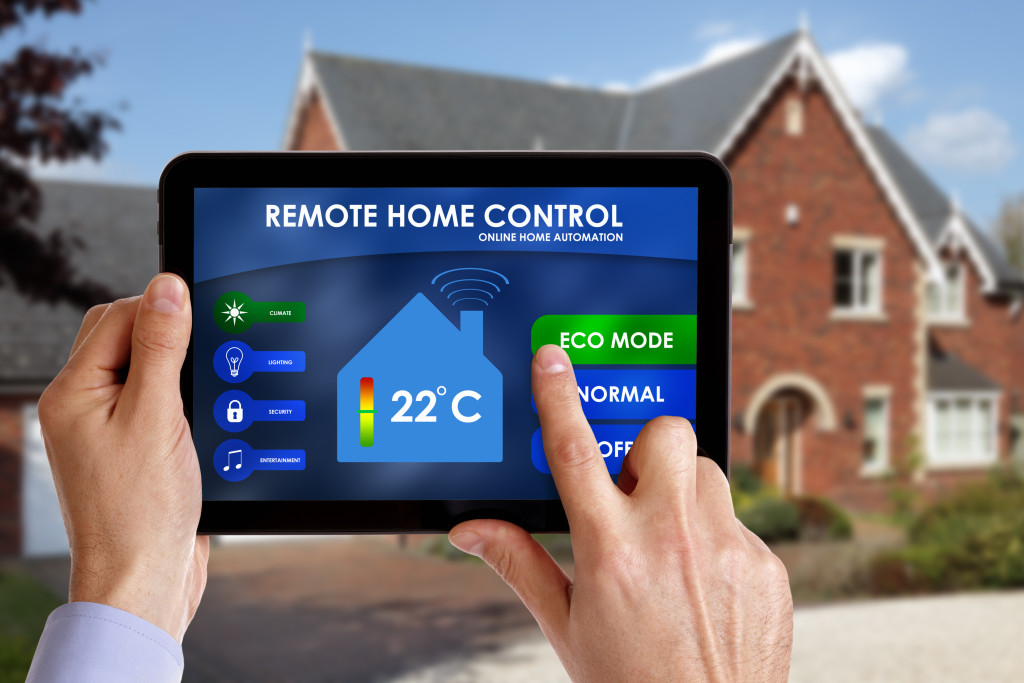- Artificial Intelligence (AI) helps automate site inspections and detect hazardous conditions.
- Smart technology allows remote lighting, heating, and security control.
- Virtual Reality (VR) and Augmented Reality (AR) allow for experimentation with design options.
- Building Information Modeling (BIM) helps identify potential issues during the design process.
- Modular builds are quick to construct and produce minimal waste.
Technology is revolutionizing the way buildings are built and designed. From artificial intelligence to virtual reality, these four technologies are changing the face of architecture and construction in the modern world. Read on to learn more about how modern-day technology is used in buildings today.
1. Artificial Intelligence
Artificial intelligence (AI) has been integrated into the building industry in various ways, from automating site inspections to streamlining engineering calculations. AI can also be used to help you detect hazardous conditions within a building and alert your maintenance workers before any damage is caused. This means that your facilities can be monitored 24/7 for potential problems, helping keep occupants safe and reducing costly repairs down the road.
Forecasting
With the help of AI, you can now also accurately forecast future trends and plan projects accordingly. This can help you determine the best materials, estimate project timelines and budgets, and ensure that your designs meet all safety regulations.
2. Smart Technology

Smart technology is becoming increasingly popular in buildings of all sizes, from homes to office spaces. By integrating smart devices into existing structures, you can control lighting, heating, cooling, security systems, and much more with just a few taps on your smartphone or tablet. Smart technology also allows for remote monitoring and management of various systems within a building, giving owners greater control over their environment without being physically present at all times.
Energy efficiency
Energy efficiency is one of the most significant benefits of using innovative building technology. By utilizing sensors and automated controls, you can reduce the energy being used and save money in the long run. The connectivity of smart devices also allows you to monitor and adjust energy use in real-time, making it easier to identify areas of waste and maximize efficiency.
Alternative energy sources
Smart technology is also being used to tap into alternative energy sources such as sun, wind, and geothermal. Connecting these renewable energy sources with a building’s existing systems can reduce reliance on traditional electricity grids and reduce your carbon footprint. Engaging reliable industrial electrical services can help you lay the groundwork for your projects to support varied energy sources. Industry professionals can also help you ensure all the necessary safety regulations are met.
3. Virtual and Augmented Reality

Virtual reality (VR) and augmented reality (AR) are becoming significantly more popular as it allows you to experiment with design options without actually constructing them. You can walk through a space before it has been created using VR and AR to determine which layouts will work best and make any necessary changes. This technology also allows for more efficient collaboration between designers, engineers, and contractors, as everyone can access the same data in real time.
Building Information Modeling (BIM)
VR and AR are also used in Building Information Modeling (BIM). BIM is a digital representation of physical structures that can be used to create detailed plans, analyze data, and identify potential issues during the design process. This helps reduce the time it takes for projects to go from concept to completion and eliminate potential problems before construction begins.
4. Modular Builds
Modular builds are a great way to construct buildings quickly and with minimal waste. You can have components manufactured off-site and then transported for assembly on location, which typically takes less time than traditional building methods and produces fewer emissions due to less material waste and transportation costs. This method is especially beneficial for multi-story structures since you can stack modules on top of one another rather than having each level constructed separately from scratch onsite at ground level, as traditional builds require.
Prefabrication also often results in more consistent quality due to the controlled environment the components are made and manufactured. Additionally, modular builds support faster demolition and deconstruction than traditional builds, which helps reduce the environmental impact of a building once it has reached its end-of-life cycle. The versatility of modular builds also allows for easy scalability and modification of existing structures as needs change.
To Wrap Things Up
Technology has revolutionized the way buildings are constructed and designed in this day and age. From artificial intelligence to virtual reality, these cutting-edge technologies are changing how the world builds, helping to create unique yet efficient designs that can withstand wear and tear over time. All in all, technology has enabled you to build smarter and more sustainably than ever before. As these trends evolve, the technology involved is poised to see even more significant advancements in the building industry, leading to safer and more efficient structures for future generations.




